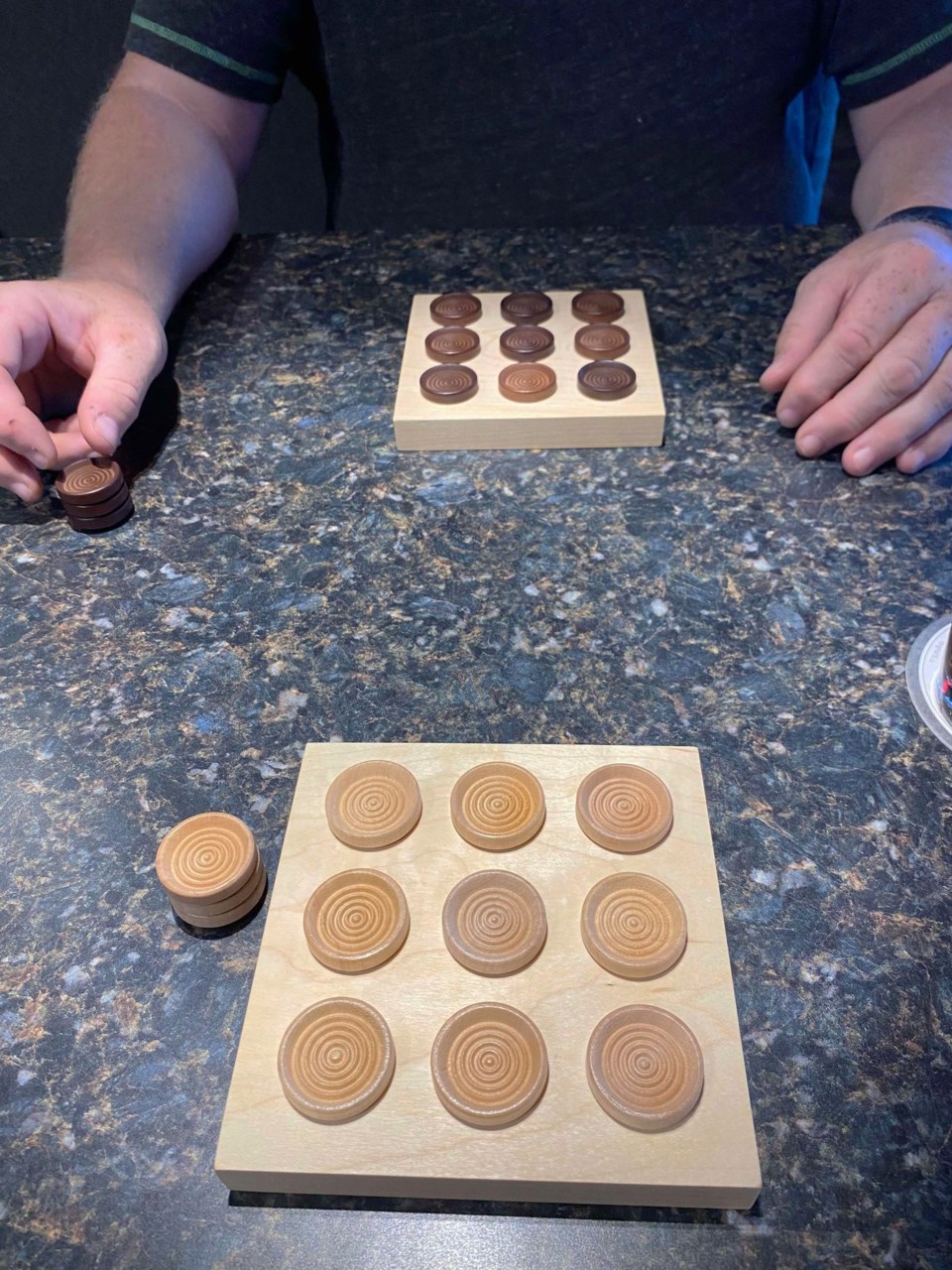YORKTON - Certainly component quality matters in a game.
As players – at least for we Meeple Guilders -- we want a game to look good on the table, and the pieces we are moving around to ‘feel’ good in-hand. Such things simply add to the game experience in a positive way.
In some cases games do go above the norm in terms of component quality.
Toppa, by designer Mark Gonyea, is a very simple, and quick to play game.
You hide nine coins – three each of three colours – under play pieces on your board.
You then trade your board for that of your opponent – it’s a two-player game.
Each turn you reveal a coloured chip. Get the three green ones first you win.
Find a red or yellow disc and it will have an impact on the game. You might get to cover spots on the opponent’s board, or you might even exchange boards again as examples.
Obviously having a good memory is a significant asset here.
So to start the component quality is almost ridiculously high.
The boards are thick and smooth wood, with perfectly drilled holes for the coloured chips (plastic but nice), and then the covering chips, back to wood that are even contoured to al-low easy stacking. On the table Toppa looks great.
Game play is easy – you could teach this one in two-minutes – but in that there is not a lot of depth, although Gonyea says strategies do emerge.
“It takes playing a few times before the different strategies begin to reveal themselves,” he said. “Toppa starts out a bit random with players taking turns revealing spaces without much information but very quickly becomes a contest of memory and strategy depending on which colorus are revealed first.”
Still it was born with an eye to simplicity too.
“The initial idea was literally a ‘What’s the simplest game I can make that's still fun?’ experiment,” explained Gonyea. “That first version of Toppa was very different from the current game, boards were significantly larger and the rules didn’t utilize any kind of strategy at all. Strictly a back and forth guessing game. Even though I thought it was fun it also really needed an extra element to make it more strategic and something people would want to play repeatably.”
But Gonyea wanted to maintain simplicity too.
“One of the things I really wanted to stick with from the original concept was that the rules of the game should fit on a single page,” he said. “I started to play test with several different sets of alternative rules. Eventually one of those sets started working really well and with a bit of further tweaking it became the Toppa game as it stands today. Off and on it was over two years in development.”
Still over a coffee or brew, this one is fun. You don’t always want to play chess, and with Toppa you can have it to the table and play a few games on a half-hour break.
Fun was really at the root of the project.
“I have really fond memories of my brother and I making up our own card games as kids so making my own tabletop game is something that was always in the back of my mind,” said Gonyea. “Now as a graphic designer I have a huge admiration and love for simplicity. I thought if I made a game that was not just fun but super fast to set-up that would be some-thing my friends and I would enjoy and something to be proud of. I also wanted to make a game that felt timeless where if someone told you they discovered this old game people used to play with wood and stones that wouldn’t seem totally unreasonable to believe.”
Toppa is not the best game of 2024 – it would vie for best components – but as a coffee table game for the casual gamer it merits a long look. There is a certain casual charm that will win fans.






